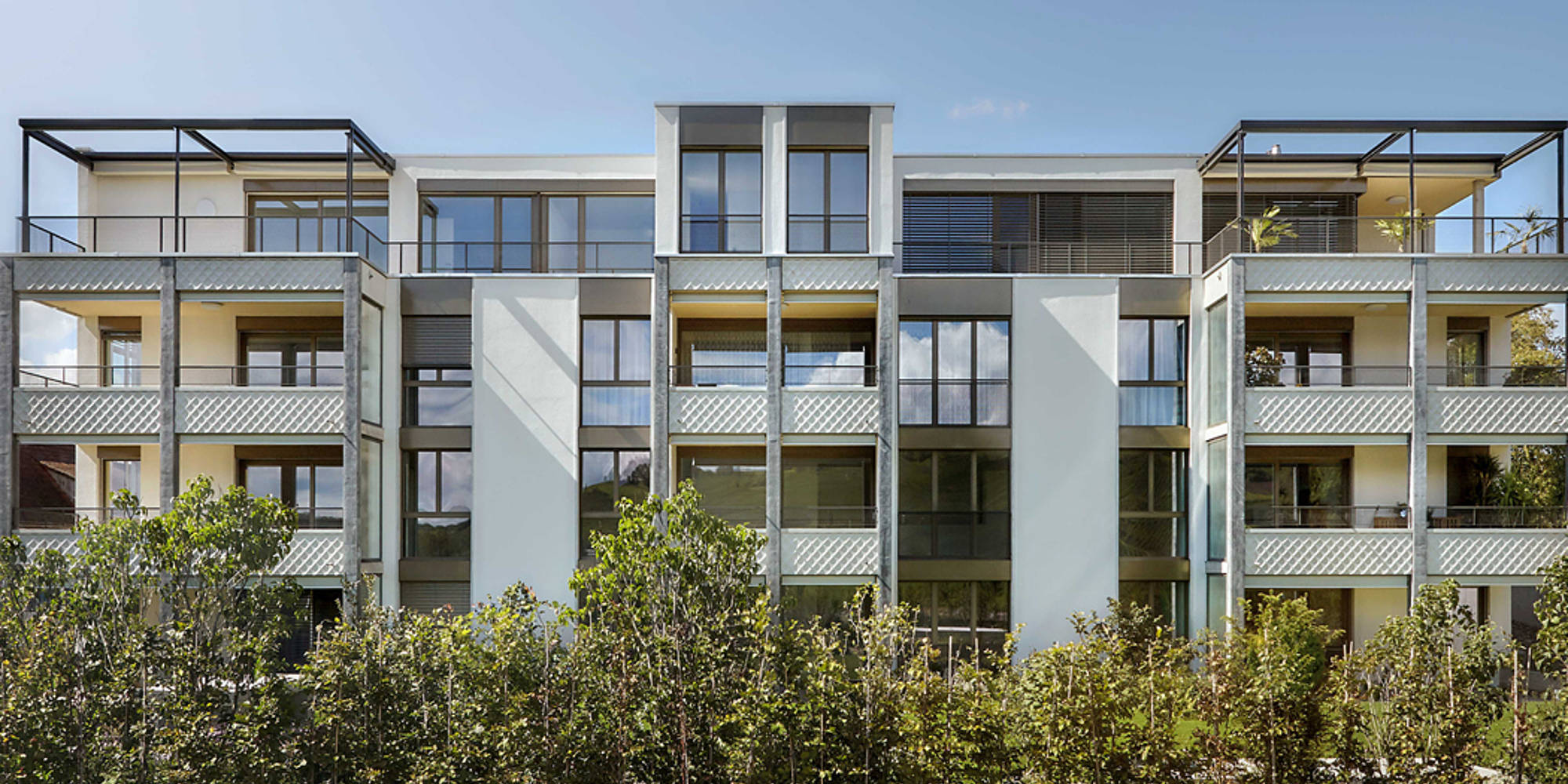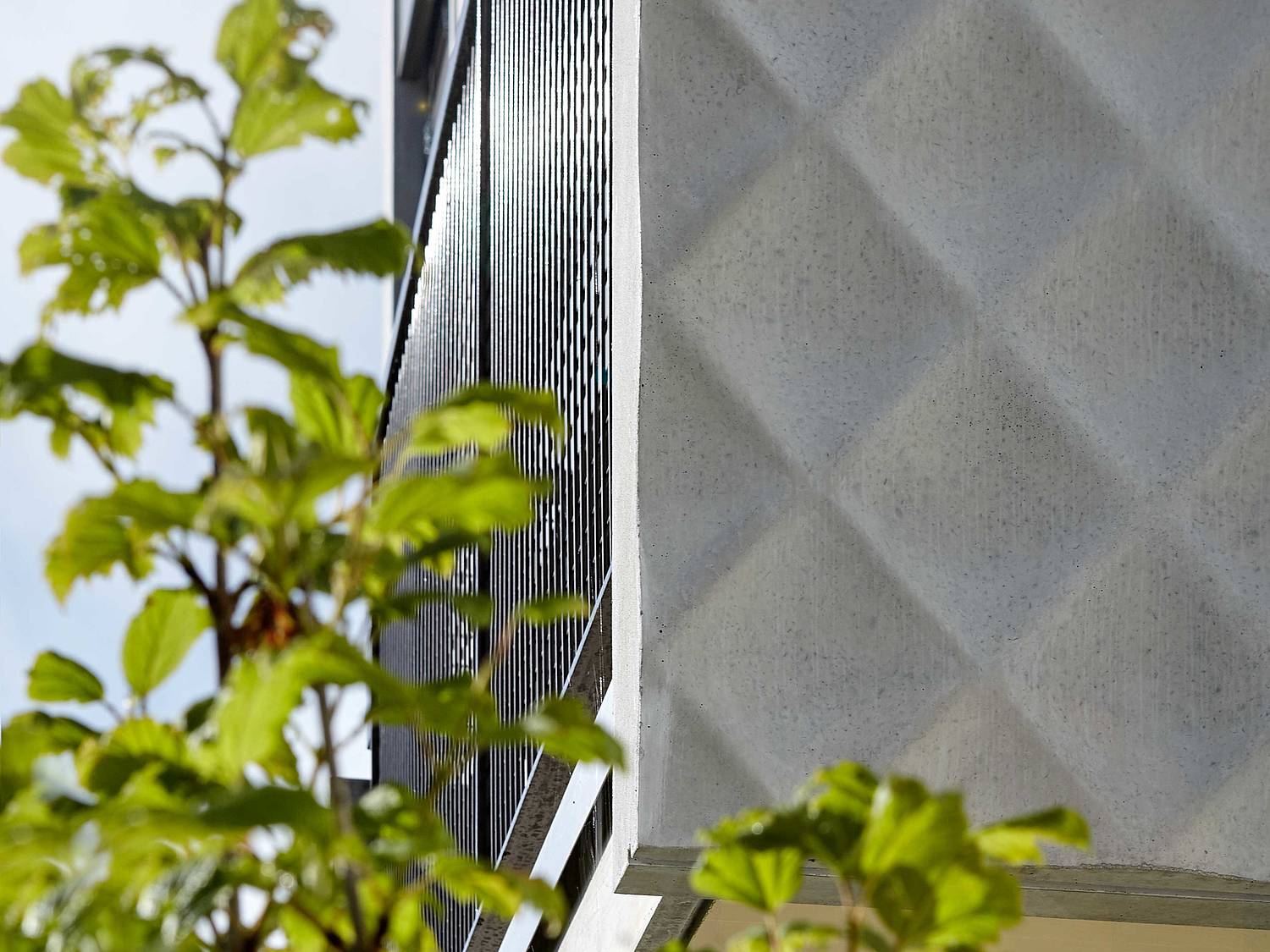Apartment house, Hallau, Switzerland
The structured façade of the new building in the wine-growing village of Hallau blends into its historic surroundings, enriching them with a modern design language and remaining within budget.
The wine village of Hallau is surrounded by rolling hills, fields and forests. It is one of the most important locations in "Blauburgunderland", as the surrounding wine-growing area near Schaffhausen in German-speaking Switzerland is called. Agriculture and wine growing are the source of the material prosperity of the population. With its picturesque surroundings, strong economic position and excellent transport links, Hallau is an appealing place to live, attracting nature lovers and families as new residents.
The influx is reflected in the new housing estates, detached homes and apartment buildings. The "Onderi Gass" area was created in 2017 under the planning auspices of the regional office Eggli de Beer. Their goals were twofold: firstly, to counteract the urban development design of urban sprawl in the region: instead of a prefabricated house look, the visual appearance should be adapted to the local environment. At the same time, the planners placed emphasis on densification, in order to occupy less land and leave as much of the natural surroundings untouched as possible.
One of these new buildings now stands on the central Bahnhofstraße in Hallau: an apartment building with an appearance that takes up the local building structure and at the same time employs a modern design vocabulary. "Its four-story structure communicates with the very steep, high-gabled roofs of the surrounding buildings", says architect Géraldine de Beer. Thus, the house joins the ranks of the existing buildings, while the alignment simultaneously ensures optimal natural light for the living spaces.

In addition, the builders placed great importance on large balconies for the apartments. The architects designed outdoor areas with massive balustrades to dampen the street noise. Eggli de Beer decided to visually emphasize the balconies. "It was important to us to design this striking façade element in such a way that an interplay of light and shadow is created and that the public could benefit from it visually", said de Beer.
The façade was designed using a structural formliner. RECKLI Area Manager Elmar Pallasch advised the architects on the application possibilities and the over 200 designs that are available in the standard range. "After five different structures were sampled, we were asked whether we could also supply the inverse of the favorite, called Venezia", says Pallasch. Venezia is a structured formliner with a diamond pattern. For the finished façade, the architects wanted the vaulting arched inwards rather than outwards, as it is in the regular execution. The production of an inverse formliner did not present any problem and transformed the standard structure into an individual structure: Venezia has never been used in this form on any other concrete façade.
In order to stay within budget, only one formliner was ordered. RECKLI delivered the matrice measuring 1.00 x 3.00 meters to the precast plant in Külling near Schaffhausen in March 2016. The formliner was placed in the formwork prior to pouring the concrete elements and removed from the surface after curing of the concrete. What remained was a precise impression of the structure. Architect de Beer is satisfied with the result. "The soft diamond pattern communicates with the crown-tiled roofs of the surrounding area and adds extra elegance to the building." With little effort, they were able to put a beautiful accent on the façade design, without putting any pressure on the construction time or budget.
